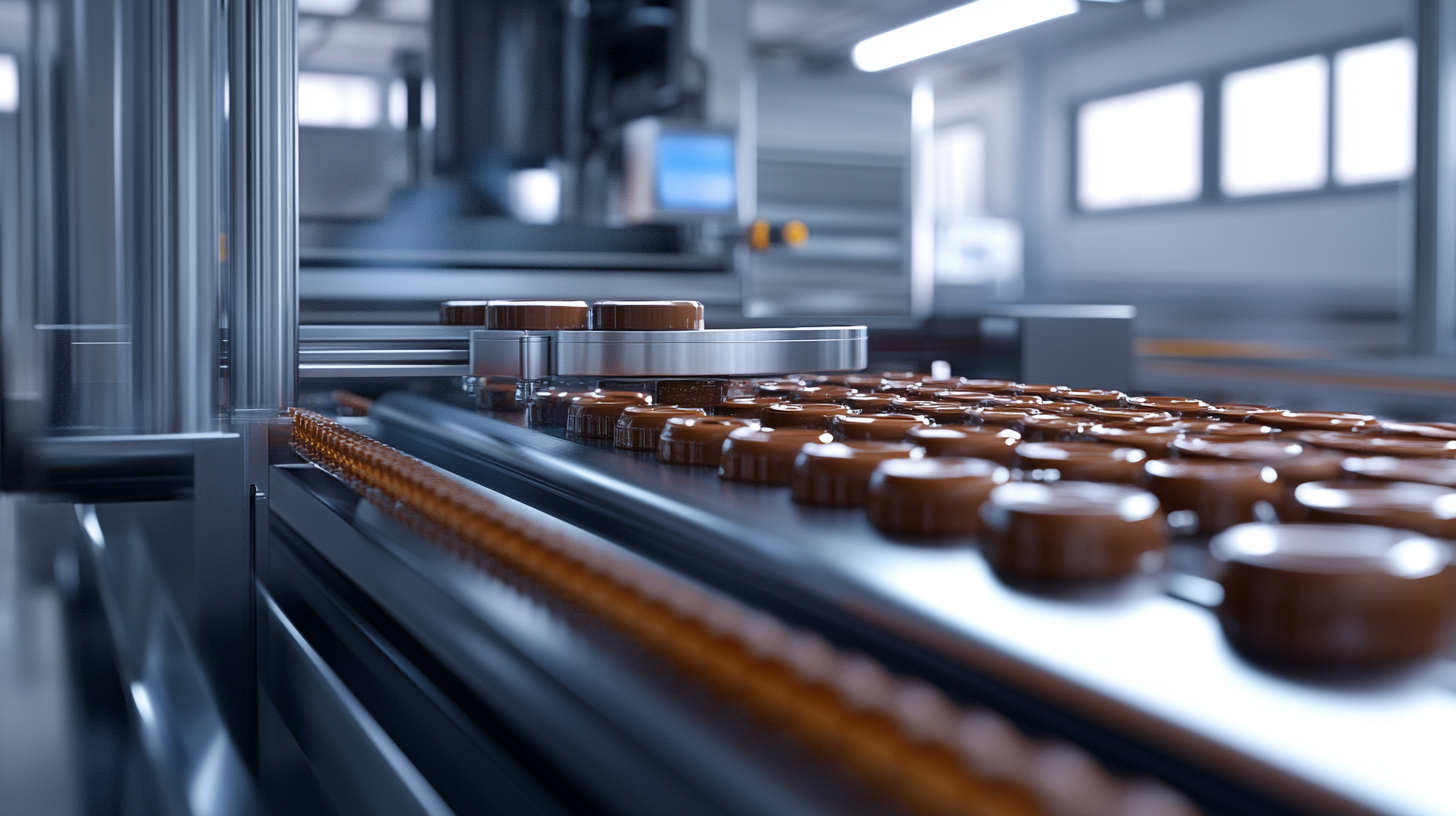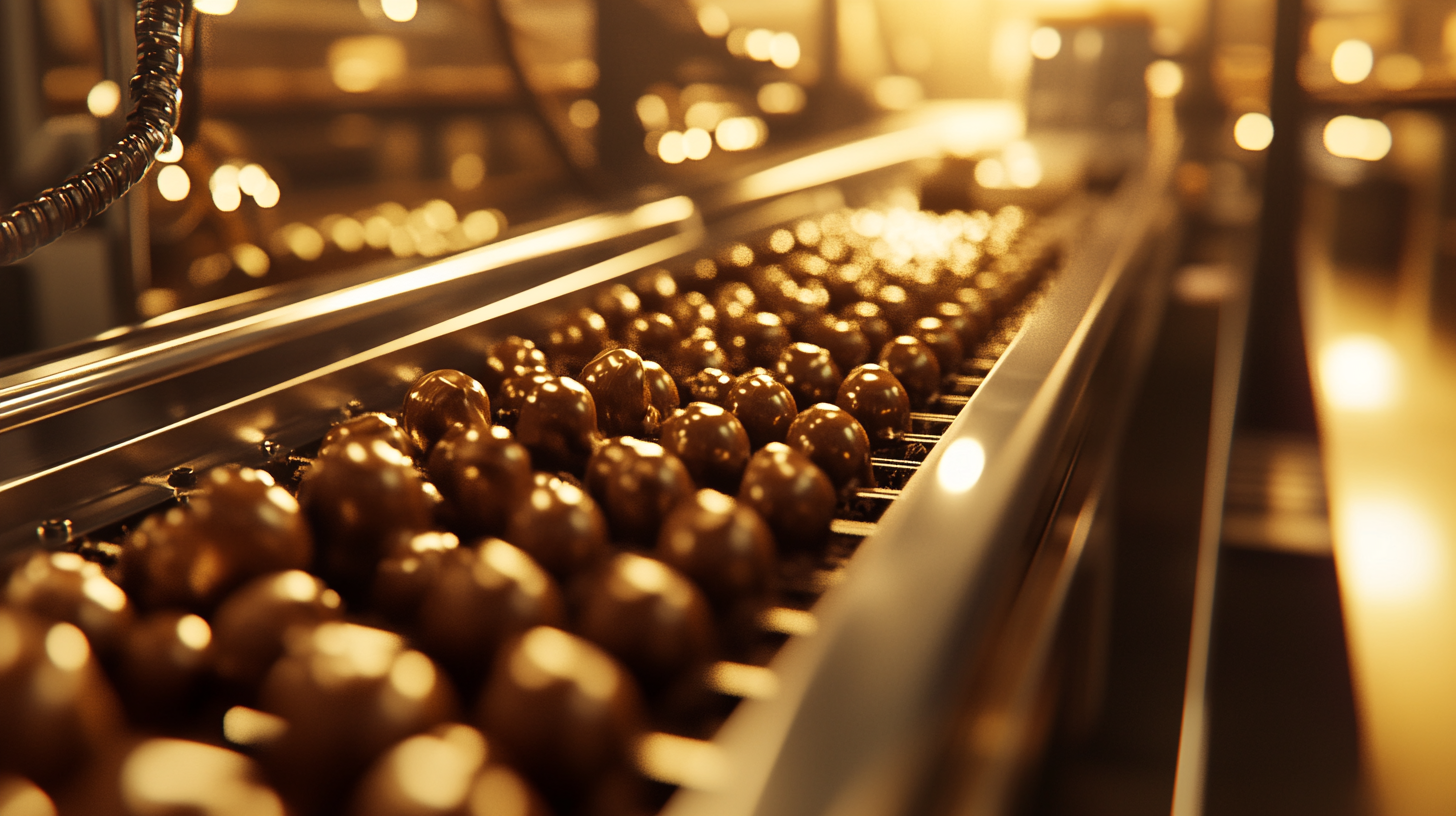What are the Benefits of Investing in Chocolate Enrobing Machines for Global Manufacturers
In recent years, the global chocolate market has witnessed significant growth, with a valuation projected to reach approximately $161 billion by 2024, according to a report by Fortune Business Insights. This burgeoning demand underscores the critical need for manufacturers to enhance their production capabilities, making chocolate enrobing machines an essential investment. These machines not only improve the efficiency of coating processes but also ensure consistent product quality, a crucial factor as 73% of consumers indicate that quality influences their purchase decisions, as highlighted in a study by Market Research Future. By integrating advanced chocolate enrobing machines into their operations, global manufacturers can achieve higher production rates, reduce waste, and ultimately cater to evolving consumer preferences for premium chocolate products. As the industry continues to innovate, those who invest in such technology stand to gain competitive advantages in an increasingly crowded marketplace.

Benefits of Enhanced Production Efficiency from Chocolate Enrobing Machines
Investing in chocolate enrobing machines presents a remarkable opportunity for global manufacturers to enhance their production efficiency significantly. These machines streamline the coating process, allowing for a consistent and uniform application of chocolate over various confections. By automating the enrobing process, manufacturers can reduce labor costs, minimize human error, and increase the overall output. This efficiency not only speeds up production times but also enables businesses to meet the growing consumer demand for chocolate-covered products without compromising on quality.
Moreover, chocolate enrobing machines offer versatility in production. With adjustable settings, manufacturers can easily switch between different types of chocolate and customize the coating thickness to suit diverse products. This adaptability allows companies to innovate continuously and respond quickly to market trends, giving them a competitive edge. By implementing these machines, manufacturers can achieve higher standards of quality control and consistent taste, which are essential in maintaining customer satisfaction and loyalty in the ever-evolving confectionery market.
Cost Savings Through Improved Manufacturing Processes in Chocolate Production
The advancement of chocolate enrobing machines is revolutionizing the manufacturing sector, particularly in terms of cost savings and efficiency. With improved manufacturing processes, these machines are designed to optimize production, ensuring more chocolate can be processed in less time and with minimal waste. This operational efficiency directly translates to substantial reductions in material costs, making it a wise investment for global manufacturers striving to enhance their bottom line.
Moreover, the integration of waste heat recovery technologies into these manufacturing processes can further amplify cost savings. By capturing and repurposing excess heat generated during production, manufacturers can reduce energy consumption and reliance on external power sources. This not only contributes to lower operational costs but also advances sustainability goals by minimizing the overall environmental impact of chocolate production. The combination of innovative enrobing technologies and efficient energy management systems creates a pathway for manufacturers to thrive in a competitive market while maintaining a commitment to sustainable practices.

The Role of Quality Control in Chocolate Enrobing Equipment
In the world of chocolate production, the quality of enrobing equipment plays a pivotal role in determining the final product's success. Chocolate enrobing machines ensure a consistent and high-quality finish that meets consumer expectations. However, the effectiveness of these machines heavily relies on rigorous quality control measures throughout the manufacturing process. Implementing stringent quality control protocols allows manufacturers to detect potential issues early, reducing waste and ensuring the integrity of each batch produced.
Furthermore, the calibration and maintenance of chocolate enrobing equipment should be coupled with regular quality assessments. This not only guarantees that the machines function optimally but also helps in maintaining the consistency of chocolate temperatures, coating thickness, and overall appearance. By investing in advanced quality control procedures, manufacturers can significantly enhance their product's reputation and consumer loyalty. Ultimately, prioritizing quality control within the chocolate enrobing process not only elevates production standards but also supports the long-term success of manufacturers in a highly competitive market.

Market Demand and Trends Influencing Chocolate Enrobing Investments
The global chocolate industry is witnessing an upward trend in demand, driven by consumers' insatiable love for innovative confectionery products. As chocolate enrobing machines play a pivotal role in creating visually appealing and delicious treats, manufacturers are increasingly investing in advanced technology to meet evolving market trends. The rising popularity of premium and artisanal chocolates calls for efficient production methods, and enrobing machines offer exactly that—enhancing efficiency while maintaining quality.
Moreover, health-conscious consumers are prompting manufacturers to explore ingredient diversity, including the use of organic and specialty chocolates. This shift not only drives the need for versatile enrobing machines but also encourages producers to experiment with flavors and textures that cater to niche markets. The integration of automation and precision in these machines allows manufacturers to streamline their processes, reduce waste, and increase overall productivity. As the market continues to expand, investing in chocolate enrobing technology becomes not just a strategic move but a necessary one for staying competitive and addressing the dynamic preferences of consumers worldwide.
Competitive Advantages for Global Manufacturers Utilizing Enrobing Technology
Investing in chocolate enrobing machines offers significant competitive advantages for global manufacturers looking to enhance their production capabilities. By streamlining the enrobing process, manufacturers can achieve higher efficiency and consistency in their chocolate coating. This technology eliminates labor-intensive manual processes, reducing both production time and operational costs. As a result, manufacturers can meet increasing consumer demand without compromising on quality, allowing them to maintain a strong market presence.
Moreover, utilizing advanced enrobing technology enables manufacturers to innovate their product offerings. With precise control over the enrobing process, companies can experiment with different chocolate types, textures, and coatings, creating unique products that stand out in a crowded market. This adaptability not only helps capture a wider range of consumer preferences but also fosters brand loyalty as customers seek out novel and high-quality chocolate experiences. By incorporating these machines, manufacturers position themselves at the forefront of industry trends, ultimately driving sales and enhancing their competitive edge.